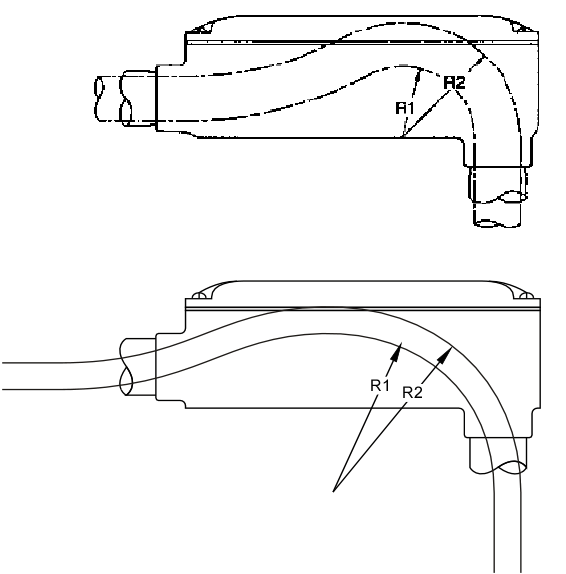3C/14AWG: 4 ? 0.34" = 1.36"
.
If we go by outside bend radius and the table you posted earlier, you're looking at 1/2" here, assuming a Tee has the same R2 as an LB.
.
3C/12AWG: 4 ? 0.49" = 1.96"
.
Same conditions as above, you're looking at 1" here.
If we go by inside bend radius, 2" for the 3C/14, and the table doesn't go high enough for the 3C/12.
If we go by centerline, we have to allow for half the diameter and use outside bend radii.
.
3C/14AWG: 4.5 ? 0.34" = 1.53"
3C/12AWG: 4.5 ? 0.49" = 2.21"
.
Then you'd need 3/4" and 1-1/4" Tees, respectively.


